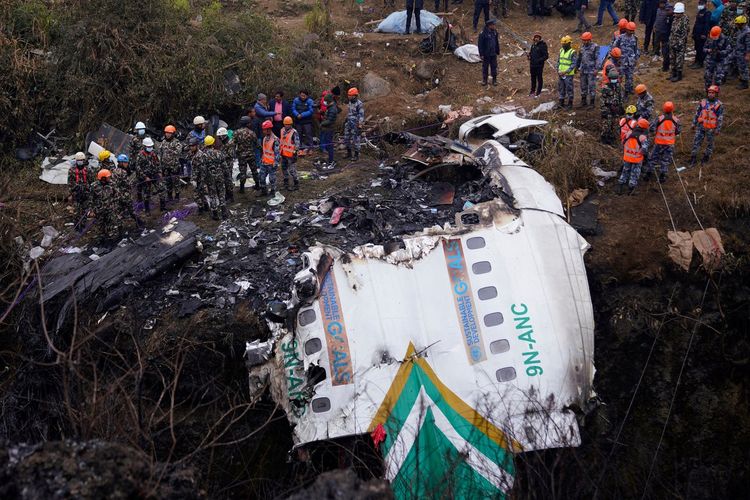Pilots mistakenly cut power leading to Nepal plane crash that killed ...

Pilots mistakenly cutting power caused the January plane crash in Nepal that killed all 72 people on board, according to a report by investigators.
A twin-engine ATR 72-500 aircraft operated by Yeti Airlines plummeted into a gorge as it was approaching Pokhara International Airport in the Himalayan foothillon 15 January. The crash site was about 1.6km from the runway at an elevation of about 820 meters.
Two infants, four crew members and 15 foreign nationals were among those killed in one of the country's worst plane accidents in three decades.
The pilots’ mistake led to an aerodynamic stall, a report issued by a government-appointed investigation panel found.
Dipak Prasad Bastola, an aeronautical engineer and a member of the investigating panel, said due to a lack of awareness and lack of standard operating procedures, the pilots had put the condition levers, which control power, in the feathering position, instead of selecting the flap lever.
This led the engine to "run idle and not produce thrust", Mr Bastola told Reuters. "But due to its momentum, the aircraft flew for up to 49 seconds before hitting the ground."
"Human factor issues such as high workload and stress that appears to have resulted in the misidentification and selection of the propellers," the report said.
It said that the aircraft was properly maintained and had no known defects, adding that the cockpit crew had been qualified according to the rules and regulations of Nepal's aviation authority.
The black box recovered from the crash was sent to Singapore for analysis to identify the cause of the crash, Nepal's civil aviation authorities said. Over a dozen investigators from the US, Canada and France subsequently joined the probe.
It was Nepal’s deadliest air crash since 1992, when a Pakistan International Airlines Airbus A300 crashed into a hillside on approach to Kathmandu, killing all 167 people on board.
Nearly 350 people have died since 2000 in plane or helicopter crashes in Nepal, which is home to eight of the world’s 14 highest mountains, including Mount Everest where sudden weather changes can cause hazardous travel conditions.



















































